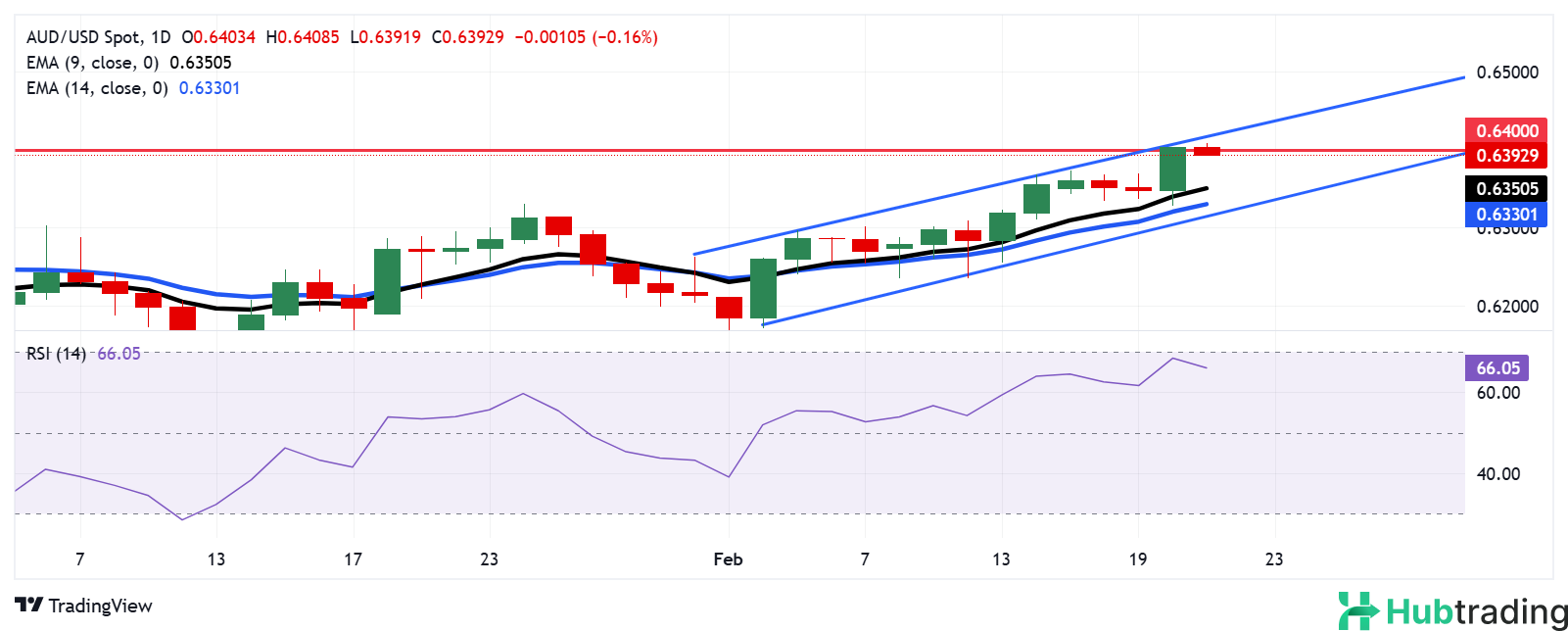- The Australian Dollar weakens as the US Dollar undergoes a technical rebound.
- Australia’s Judo Bank Manufacturing PMI rose to 50.6 in February, up from 50.2 in January.
- RBA Governor Bullock cautioned that overly rapid or excessive monetary easing could slow the disinflation process.
The Australian Dollar (AUD) edged lower against the US Dollar (USD) following the release of Judo Bank’s Purchasing Managers Index (PMI) on Friday. However, the AUD/USD pair saw brief gains after US President Donald Trump hinted at progress in trade negotiations with China, easing market concerns over tariffs.
Australia’s Judo Bank Manufacturing PMI increased to 50.6 in February, up from 50.2 in January. The Services PMI improved slightly to 51.4 from 51.2, while the Composite PMI edged up to 51.2 from 51.1.
Reserve Bank of Australia (RBA) Governor Michele Bullock warned that easing monetary policy too quickly or excessively could slow disinflation, potentially keeping inflation above the target midpoint. She reiterated the RBA’s commitment to data-driven decisions and a cautious policy approach.
US Dollar Outlook and Market Drivers
- The US Dollar Index (DXY), which measures the USD against six major currencies, trades near 106.50, but faces pressure from weak US jobless claims data and mixed Federal Reserve (Fed) commentary.
- US Initial Jobless Claims rose to 219,000 for the week ending February 14, exceeding the forecast of 215,000. Continuing Jobless Claims increased to 1.869 million, slightly below the projected 1.87 million.
- Fed Governor Adriana Kugler stated that US inflation still has "some way to go" before reaching the 2% target, highlighting economic uncertainty.
- St. Louis Fed President Alberto Musalem warned of stagflation risks and rising inflation expectations, while Atlanta Fed President Raphael Bostic left the door open for two rate cuts this year, depending on economic data.
- President Trump suggested a new trade deal with China is possible, with Chinese President Xi Jinping expected to visit. Discussions also included TikTok regulation and potential 25% tariffs on lumber and forest products.
- The latest Federal Open Market Committee (FOMC) Meeting Minutes reaffirmed the decision to keep interest rates unchanged in January, emphasizing the need for further assessment of inflation and labor market trends before any rate adjustments.
- The Australian Bureau of Statistics (ABS) reported that Australia’s Unemployment Rate rose to 4.1% in January from 4.0% in December, meeting market expectations.
- Employment Change came in at 44K for January, down from a revised 60K in December (previously 56.3K), but still exceeding the consensus forecast of 20K.
- RBA Deputy Governor Andrew Hauser stated that the central bank’s policy remains restrictive, adding that the latest jobs data showed little cause for concern.
- The Reserve Bank of Australia (RBA) cut its Official Cash Rate (OCR) by 25 basis points to 4.10% on Tuesday, marking the first rate cut in four years.
- RBA Governor Michele Bullock acknowledged the impact of high interest rates but emphasized that future rate cuts are not guaranteed, despite market expectations.
Technical Analysis: AUD/USD Testing Key Psychological Barrier at 0.6400
The AUD/USD pair hovers around 0.6400 on Friday, trading within an ascending channel, suggesting a bullish sentiment. The 14-day Relative Strength Index (RSI) remains above 50, reinforcing the positive outlook.

-
Key Resistance Levels:
- 0.6400 (psychological resistance)
- 0.6420 (ascending channel’s upper boundary)
-
Support Levels:
- 0.6350 (nine-day Exponential Moving Average - EMA)
- 0.6330 (14-day EMA)
- 0.6320 (ascending channel’s lower boundary)
Traders should closely monitor market sentiment, Federal Reserve commentary, and trade developments as AUD/USD remains sensitive to global economic trends and risk sentiment.





